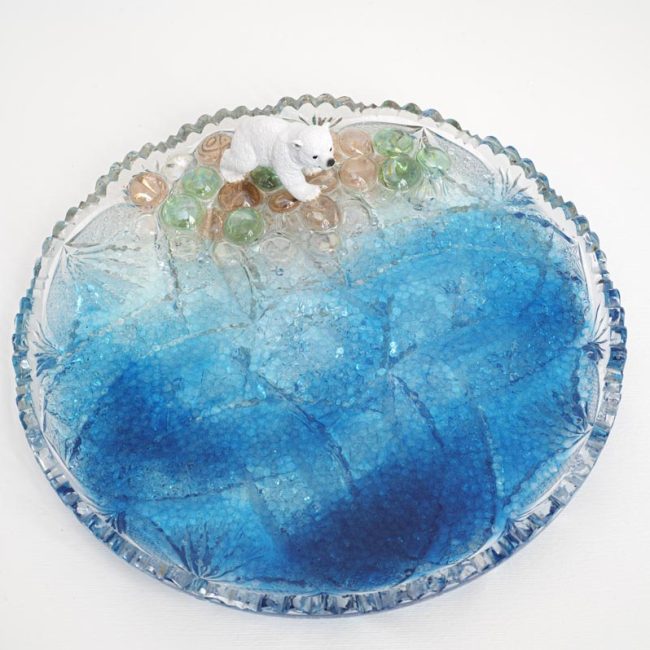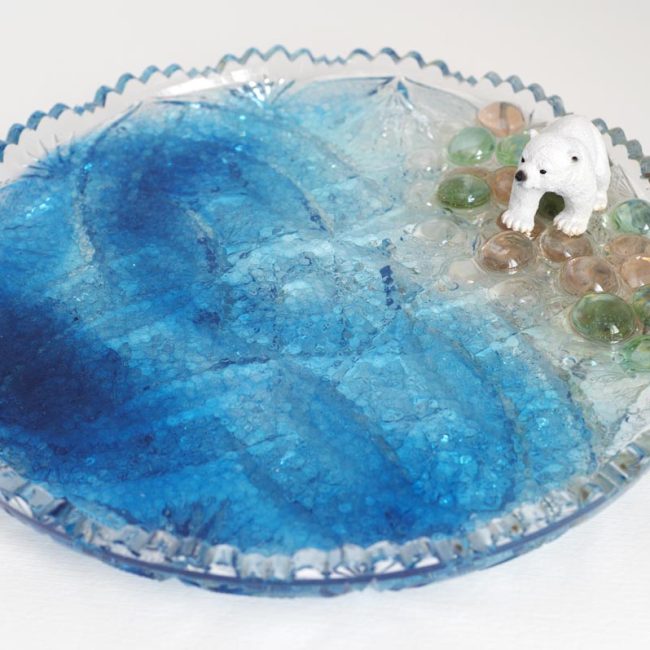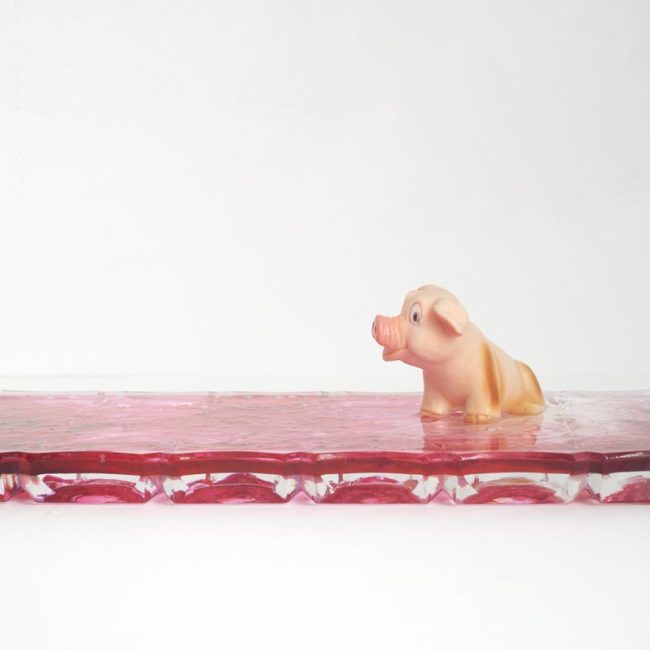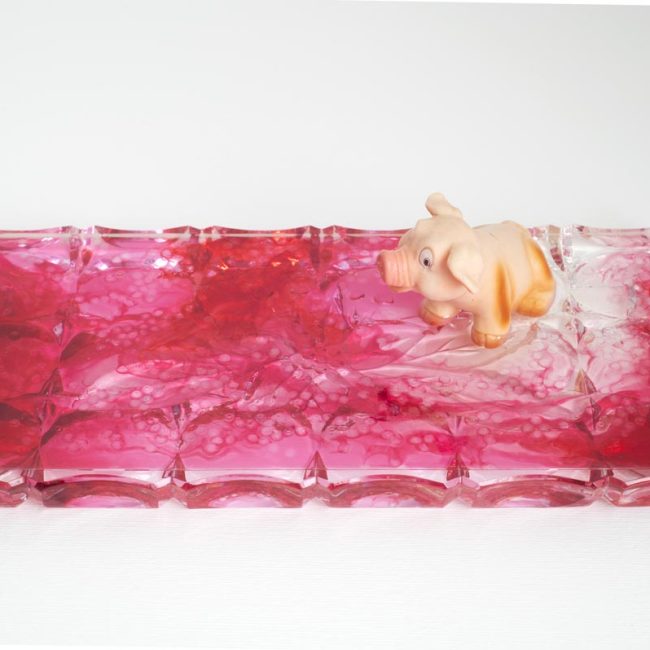“Antonella Quacchia makes use of the liberating power of painting and material. Colors and other physical elements, the moment they become part of the artwork, change in nature, float in space, become a fluid, liquid matter that gives access to a completely new expressive world that is released from everything. This process is even more evident in the recent series of works titled Serendipity, made with resin and salvaged everyday objects such as old Bohemian crystal plates or other household provisions found in markets between Vienna and Prague (where Quacchia now lives). They are “short feminine stories” that use, as a fluidizing material, resin and that incorporate and freeze within themselves various objects, figurines and symbolic figures, like shipwrecks sailing from the archaeology of the past to the dystopia of the future. Small, three-dimensional stories that rise as paradigms of the human condition and take on the task of staging the representation of universal archetypes: the story of the polar bear clinging to an ice floe made of earth and moss as he gazes anxiously at the Arctic sea in which the ice has now melted; the story of the piglet smiling over a slice of Prague ham; the story of the thirsty horse and the story of the entangled chameleon… With these little stories, Antonella Quacchia dives into the contemporary debate of global warming and the climate crisis to come up with a tale that, through some pleasant and unexpected discoveries (Serendipity), also has the ability to make the audience think about some pressing social issues of the day.”
Chiara Canali – Art Critics
This installation consists of several small three-dimensional objects, each measuring approximately 15x35x25 cm. Each object tells a story set against the backdrop of old Bohemian crystal dishes that I found at flea markets in Prague. These are accompanied by rubber or plastic figurines that I recycled and combined with a non-toxic resin pigment mixture. Through simple and immediate narration, these stories address ecological issues impacting our environment, animals, and indirectly, our lives on this planet.
The installation is modular and can be adapted to fit the specific exhibition space and desired setup.
The Melancholy Adventures of a Polar Bear The tale of the polar bear highlights the desolation of a rapidly melting ice floe in a blue sea, shrinking the vital habitat for these creatures. According to recent studies by the IUCN, polar bears risk extinction by 2050. However, this story also aims to encourage actions that promote the protection of the Arctic habitat. Reducing greenhouse gas emissions globally will help mitigate some of the negative effects of the climate crisis, maintain sea ice integrity, prevent sea levels from rising, and ensure polar bears can feed and nourish themselves and their cubs.
The Journey of a Piglet The innocent-looking piglet, immersed in a red bath evoking blood and passion, reminds us of the responsibility of both the food industry and consumers regarding how these animals are raised and slaughtered.
The Great Escape of the Chameleon The chameleon, a symbol of adaptability, tries to escape a scene where its habitat is threatened by increasingly violent tropical cyclones and human actions such as poaching and destruction. Like all living species on this earth, there is no other place for it to seek refuge; we do not have another planet to go to. This story underscores the necessity of safeguarding our planet, which is our only home.
The Bound Elephant’s Tale The story of the chained elephant stems from my recent trip to Laos, a country once known as “the kingdom of a million elephants,” where now only about 600-800 elephants are estimated to survive in the wild. This scene emphasizes these majestic creatures’ plight, which risk surviving only in captivity. Every action, no matter how small, that each of us can take can significantly impact the fight for elephant conservation and the effective enforcement of laws that guarantee their protection. Examples include participating in awareness campaigns, choosing responsible tourism practices, and avoiding products that contribute to the destruction of elephant habitats.








